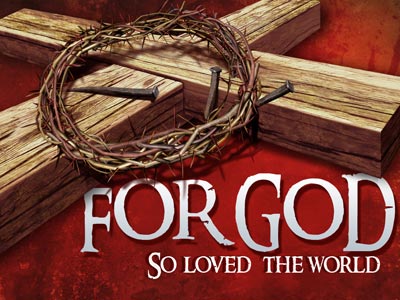-
Witnessed Signs Series
Contributed by Dennis Davidson on Nov 28, 2017 (message contributor)
Summary: At the moment of the Messiah’s death, God provided three miraculous signs. Matthew alone records all the supernatural events that accompany Jesus’ death. He aslo tells us of some of the people who witness the event & how some of them were affected.
MATTHEW 27: [50] 51-56
WITNESSED SIGNS
After Jesus dies the oppressive darkness over the earth is lifted. Everyone knew something significant had happened. The substitutionary death of Jesus brings light (salvation) to a world lost in sin and darkness, that is, to all those who accept Him by means of faith. There are other signs that occur also. At the moment of the Messiah’s death, God provided three miraculous signs. Matthew alone records all the supernatural events that accompany Jesus’ death. The three signs are found in verses 51-53. Verses 54-56 tell us some of the people who witnessed the event and how some of them were affected.
I. THE SIGNS OF THE CROSS, 51-53.
II. THE WITNESSES OF THE CROSS, 54-56.
Verse 51 begins with “behold” or at that moment indicating at the Messiah's death, God provided miraculous signs. Behold or at that moment draws the reader's attention to the three signs, testifying to their reality. The first sign that occurs at the moment of Jesus’ death is The Torn Curtain. “And behold, the veil of the temple was torn in two from top to bottom,”
In the temple, behind the veil was the Holy of Holies, the innermost sanctuary, the place where the ark of the covenant rested. Covering the Ark was the mercy seat, and filling the Holy of Holies was the Shekinah glory of God—the visible, tangible presence of the Lord.
This place was so sacred that only once a year (on the Day of Atonement) only one man (the high priest) was allowed to enter. On Yom Kippur, the Day of Atonement, the Good Friday of the Old Covenant, the high priest would take the blood of the bulls, goats, and lambs that had been sacrificed on the altar in the courtyard and would walk into the Holy Place, the area of the temple where all priests were allowed. He, and he alone then entered beyond the veil separating the Holy place from the Most Holy Place and offered the blood of the substitutionary sacrifice on the Mercy Seat. This sacrificial blood was to atone for the sins of all Israel. For without the shedding of blood there is no redemption or atonement or forgiveness of sin (Heb. 9:22).
This veil that separated man from the Presence of God in the Holy of Holies was massive. It was sixty feet high, thirty feet wide, and ten inches thick. The veil was so heavy that it took three hundred priests to hang it.
So the room outside the Holy of Holies was called the Holy Place. Between the two rooms hung a thick curtain, separating all of humanity from the presence of the thrice holy God-except the high priest one day, each and every year and never without blood.
[If, however, the high priest was not properly cleansed—if he was not right with God—he would die in the Holy of Holies. In Exodus we read that hanging from the hem of the high priest’s robes were hung bells and pomegranates, signifying the gifts and the fruit of the Spirit. As long as the priests in the Holy Place could hear the bells on the high priest’s robes ringing behind the veil, they knew everything was all right. But if the bells stopped ringing, they knew there was trouble. In later years, a rope was tied around the ankle of the high priest so that if he dropped dead, he could be pulled out of the Holy of Holies without placing anyone else’s life in jeopardy. Courson, Jon: Jon Courson's Application Commentary. Nashville, TN: Thomas Nelson, 2003, S. 210]
At the moment of Jesus’ death, this curtain was torn in two from top to bottom. That massive veil was ripped from top to bottom as if it were a piece of paper. Matthew recorded the direction, from top to bottom, to show that it was torn at God's initiative. The tearing of the temple veil to the Holy of Holies is a sign that the way is now opened for any and everyone to enter into the presence of God, through the substitutionary sacrifice of the Messiah [Hebrews 10:10, 17–22].
During the centuries of Israel's existence, it was unheard of for common people to consider approaching God. The penalty for such arrogance was death. But now God has invited anyone to approach Him. In the death and shed blood sacrifice of Jesus there is access into God’s holy presence. He has paid in full the price of sin and now thrown open access to His holy presence for all who will come in Jesus’ name covered by His blood. For the first time, provision had been made for God to accept sinful humans as forgiven, having been made as righteous through the sacrifice of his Son. Therefore, to you who have been cleansed by the blood Hebrews says, come boldly into the presence of God.

 Sermon Central
Sermon Central



